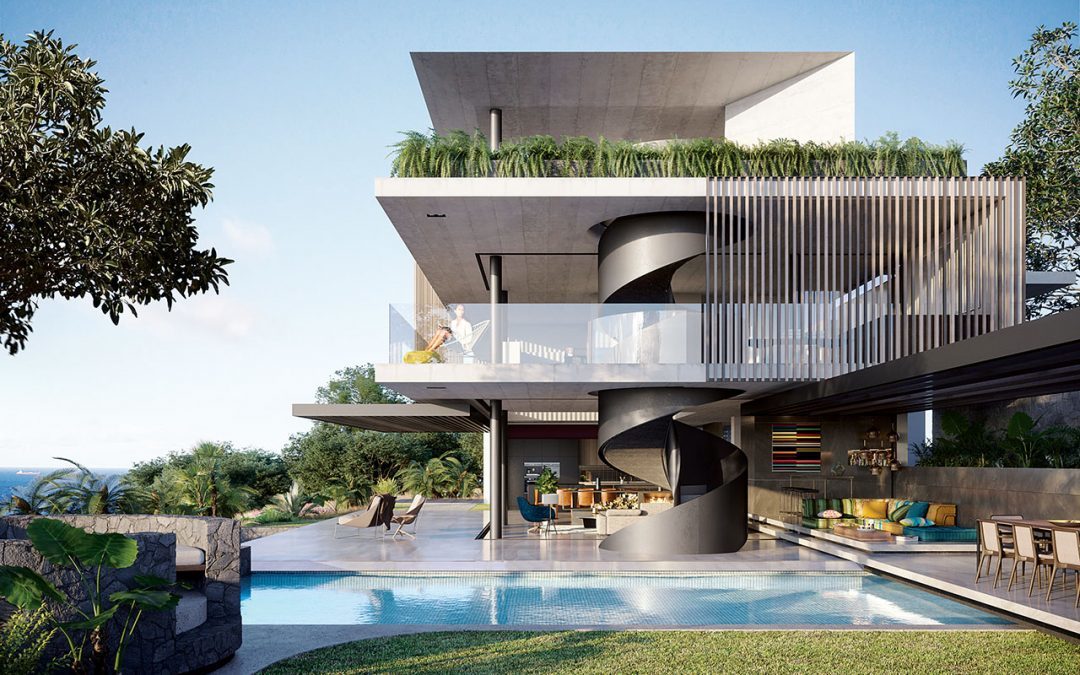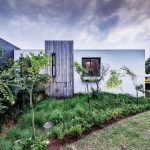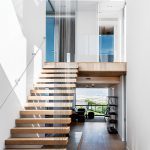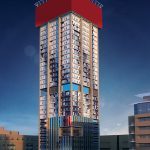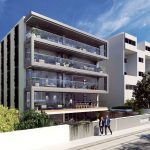In 2020 South Africa, the sector that includes contemporary architecture, interior architecture and design will surely see progress in creativity, innovation and eco-awareness, albeit largely in the upper levels of the economy.
‘When I‘m asked what I believe in, I say that I believe in architecture. Architecture is the mother of the arts. I like to believe that architecture connects the present with the past and the tangible with the intangible.’ – architect Richard Meier.
- JK Designs
- JK Designs
Indeed, as construction evolves, recent R&D and technical advancements are shaping how we design. Such energies result from shared ideas and the convergence of building technologies that open up new possibilities for architecture. From the atomic scale of materials to prefabricated and pre-assembled homes, the advances in BuildTech are being noted across associated industries. It is key, and as a result, disciplines are learning from one another to reimagine how we build.
Architectural trends for 2020 indicate a common thread: the commitment to sustainable development. And populations globally are developing an environmental responsibility as a social manifestation. The use of recyclable materials – buildings that are self-sufficient and installations of all kinds that respect the planet – are becoming increasingly important issues.
- G Squared Architecture and Interiors
So, what are the key factors of sustainable development and environmental responsibility, and does this cost more?
Adrian Maserow of Adrian Maserow Architects believes that: ‘Site and locality provide clues to the best options in respect of sustainability. But every project has the potential to use less energy, less water and provide well-being as the prime motivator of the architectural creation. In Africa, we respond well to nature, its pristine light, lush plants and fresh air, and to the natural textures of warm woods and soulful organic materials that shape the tactile nature of our architecture.
‘There is no longer a premium cost for sustainable design. Smart empirical lessons learnt become the language of a real feasibility for sustainability. Denser urban living residences (closer to work opportunities) are an essential strategy to ensure limiting carbon emissions. And the adaptive reuse of existing but outdated structures is reinforcing sustainability by reducing the need for new building construction.’
George Elphick of Elphick Proome Architects: ‘Sustainable development is an imperative and the total responsibility of built environment professionals. Its price tag should not really be a consideration because in the long term we have to maintain the planet. With sensible and intelligent design, one can practically produce sustainable buildings for the same cost as it would to develop conventional buildings.’
‘The recent climatic events in the world: bush fires, storms, droughts and heat waves are stark reminders for those who still doubt the need for humankind to review and change our way of life on this planet,’ says Kevin Lloyd of Kevin Lloyd Architects. ‘Especially in the way we live and shelter. As one of the major participants and leaders in development within the environment, architects should lead the way; but to date there has been a cost associated with more environmental and sustainable designs, and often this has been a captured market for a fortunate few. However, the less sophisticated solutions, using low tech or simple tech methods, are being approved by the authorities, and appreciated by clients as an acceptable solution offering similar results.
- KLA
‘As it has become more rational, so the costs have started to decrease. Sustainability is not necessarily more expensive if one considers the basics of good design, such as orientation, material use, space planning and construction methods. The inter relationships of these and other design requirements can effect substantial benefits without extra cost.’
‘A growing trend globally is to be responsible for the future and long-term impact of present and current decisions made in design; and the result is that architects are designing with that in mind. This can be attributed to more local issues too, such as the supply of electricity and water, so we see more requests for solutions,’ says Renato Graca of G Squared Architecture and Interiors.
- G Squared Architecture and Interiors
- G Squared Architecture and Interiors1
‘Design and material selection should focus on longevity. Materials which require little to no maintenance and can be left to age gracefully are key, as is the ongoing maintenance of buildings – heating / lighting / water and sanitation. The implementation of sustainable and low to zero cost installations – such as boreholes, water filtration and the smart placement of openings and lighting – all assist in reducing the cost of running a building, be it residential, corporate
or commercial.’
Donovan Gottsmann of Gottsmann Architects is categorical: ‘Architects have the power to intervene and direct all developments and construction down a sustainable path; a possibility many don’t yet quite grasp. According to the UN Global Status Report, buildings, together with their construction, account for 36 percent of global energy use and produce about 39 percent of energy-related carbon dioxide emissions during their lifespan. Through applied design, architects have the power to change such an extent and impact on the environment.
- Gottsmann Architects
‘Low-energy consumption buildings involve considerations present from the genesis of design, mitigating a large portion of the cost and necessity for ‘clip-on’ or retro-fitted technologies. And yet we also have a responsibility to our clients to produce financially feasible and sustainable developments. With careful planning, these two aspects can
be achieved.’
‘We favour creating a project that is as low maintenance as possible and energy-efficient without being exhaustive to the owner, encouraging clients to introduce some solar power to offset the need to be on grid continually with regards to basic services. We’ve made use of rainwater harvesting and grey water recycling, but due to a number of factors, this is not cost-effective and in many cases is ineffective. Siting the build in the correct orientation to north is vital and can save the homeowner outlay on heating and cooling costs,’ says Neal Nel of AXO Studio.
Indeed, climate change is a real and vital challenge for human society and consequently for architecture. 2019 European guidelines mandate that all homes built in Europe after 2020 should consume almost zero energy. So, although architecture might have been late in joining the green bandwagon, the prerequisites for making it a sustainable part of society’s development are being put in place.
‘As architects, we have a role to play in influencing sustainability in the built environment,’ so says Marius Marais of Marais 4 Architects. ‘We have to be knowledgeable about products that can save our clients’ money ongoing by reducing the cost of electricity / water usage, which is ever increasing on an annual basis. Funds are indeed better spent by investing in sustainability and increasing the relative value. In so doing, one saves on future service costs and reduces the carbon footprint.’
- Marais 4 | franz rabe | natural photography | naturalphoto.co.za
So, 2020 should see an escalating awareness in building techniques that will increasingly consider an architectural project from a thermodynamic point of view in order to reduce energy consumption. New buildings will incorporate water-saving and energy-efficient systems, smart fixtures and appliances and better insulation. Strategies that further involve basic elements, such as sunlight and wind direction, will be taken into account.
Neal Nel adds: ‘Sustainable development is a responsibility that each person on any building project should be aware of, and architects can design a building, which is environmentally friendly and has a low carbon footprint. But what did it take to produce all the materials, how did they get to site, what waste material (packaging etc.) was discarded during the construction process? And at the end of the life of the building, what can be recycled and reused?
‘Creating a structure that is passively eco-conscious is commendable. But the materials used in the building are manufactured in factories that consume massive amounts of energy and produce huge quantities of waste materials, most of which cannot be recycled. We see so many building sites where contractors simply remove innumerable skip bins of waste materials with no regard to recycling the packaging materials, broken bricks, unused sand and excess concrete that is discarded.
‘Costs could be reduced if such rejected materials were handled correctly on site and converted into compactable fills. These could be used under paving, driveways and roads, thus eliminating the need to order more material that has to be brought on site, i.e. less transport costs and emissions. There is sadly little such initiative in SA and we are far behind the rest of the world when it comes to recycling.’
Johann Koch of JK Designs agrees: ‘The building industry globally has the incredible privilege of being able to make a monumental impact at grassroots level. Just imagine if every new building that was to be developed was fully sustainable, the sheer difference it would make to the survival of our planet. However, SA does not have the incentives in place for trying to save the earth, for clients to want to spend the substantial additional cost of going the green route. This needs to be addressed.’
- JK Designs
What is the practicality of recycling and where are the advantages or disadvantages?
‘This is an admirable practice as it provides new purpose for materials and reduces the impact that the manufacturing of such products has on the environment. Re- and upcycled items can introduce authenticity and a sense of space to architecture, because their age evokes a measure of history,’ says Donovan Gottsmann.
Until now, the model followed in construction was linear: produce, build, use and discard or demolish. This translates into extensive energy and natural resource consumption with the result being vast amounts of waste. However, the circular economy operates on a model based on cradle-to-cradle design – the base principle of which is taking advantage of and reusing everything that is considered waste – while being efficient with resources in all phases of construction.
- Gottsmann Architects
‘Recycling an old building element or structure has the advantage of invoking a period character to a space, which would have to be faked in a new build. Old materials and buildings have a patina, worn surface edges, a solidness and often a size that’s no longer available in a new build,’ so says Kevin Lloyd. ‘It can provide a thread in our life, of where we came from and why we’re here. A building without a history is like a man without a memory. The old and new together can often create a counterpoint that makes the space or building come alive. With a stunning result. A disadvantage of reuse is that often the modular dimension is different to contemporary practice, and that current building codes are not able to accommodate old building elements.
‘Many older structures were far more spacious in terms of their internal and external rooms. Reuse can mean placing more than one enclosed space within the existing, in such a way that’s not possible in a new build.’
The principles of this circular economy should be implemented extensively in architecture with the aim of decreasing the environmental impact. In the US and Europe, manufacturers are increasingly offering building materials with a circular life cycle. These include finishes or coatings made out of recycled materials such as: rubber and glass, plus insulation panels made from discarded wastes like crushed cork and cellulose from the paper industry.
- KLA
- KLA
Construction and demolition produce one-third to one-half of the solid waste of developed countries. So, recycling is the process of converting waste materials into new materials and items. It’s a key component of current waste reduction and an objective for eco-aware contemporary architects and designers. As well as breaking down old materials to create new ones, this also includes upcycling: the process of creating something new and better, using existing materials to improve upon the original. The end result may be a product or item that is eco-friendly, innovative, socially and environmentally sustainable and cost-effective.
Renovate or demolish – this is the question?
Further, old or unused buildings in SA’s major centres can be revamped into avant-garde structures, given new life and / or transformed into contemporary corporate space, lofts and apartments. In 2020 we may see the principles of recycling applying more to building rehabilitation. This has particular relevance in SA and could gain momentum as a result of the economic crisis; instead of buying a new property, developers and homeowners will opt to renovate the current one.
Adrian Maserow is conclusive: ‘Repurposing offers some of the most exciting opportunities in the drive to net zero carbon buildings that will become standard practise for leading practices. For me, the key to revitalising an urban environment can lie in an individual building acting as a catalyst for environmental transformation.
- AMA
‘Our repurposing of a Johannesburg 30-storey high iconic city landmark is a powerful manifestation of ongoing efforts to claw back the Johannesburg central business district from the socially and economically debilitating effects of neglect, grime and crime. This mixed-use building enables a prominent South African bank to simultaneously occupy less space, facilitated by its offices’ flexible workplace planning; while also fulfilling its vision of contributing to the community and providing impetus for the rejuvenation of this part of the CBD. It includes 20 floors of low-cost residential accommodation of 520 apartments, atop 10 floors of office space. Plus, a retail ground floor with coffee shop, restaurant and recreational areas, an art gallery, childcare facilities, a public square with planted park-like enclaves and integrated public transport facilities.’
In a society used to destroying rather than preserving or transforming, such a change of mentality entails a double challenge for architects. This since the recycling of spaces implies not only conservation and renovation work – based on respect for tradition – but also the adding of new value to buildings and adapting them to contemporary needs. Renovation is a way to approach construction from a more ecological and sustainable point of view.
- EPA
- EPA
‘Adaptive reuse of existing buildings is a sensible and suitable process in many cases, particularly in older established major centres and urban environments. Advantages include an existing framework within which to build, while disadvantages relate to inappropriate buildings being converted into new-use functions. With respect to recycling materials, this is realistically in its infancy in SA, but should be a vital consideration in the long term,’ says George Elphick.
Crumbling façades, asbestos content and outdated elevators are often cited as reasons to demolish tall buildings and create new skyscrapers. However, renovation can be a better option than demolition and reconstruction, say researchers. And this applies equally to residential buildings where decline is more often a consequence of functional obsolescence rather than structural decay. Revamping of interior space is key here.
- Marais 4 | franz rabe | natural photography | naturalphoto.co.za
Marais 4 Architects specialises in renovating existing properties, be it residential or commercial. Although it’s a more difficult process, they believe it can have many benefits for the owner. Says Marius Marais: ‘In most cases, old properties suffer from a lack of effective lighting, which can result in poor energy efficiency; and often also spatial flow because of bad planning.
‘With an intelligent masterplan, walls can be knocked out and natural lighting levels improved. As an added bonus, the building can receive a façade face-lift to provide a more contemporary look, which can provide a new lease on life and extend its usefulness well into the future. Renovating an existing building is normally much more cost-effective than demolishing and rebuilding, especially in the current economy where budgets are very tight.’
- EPA
Johann Koch thinks otherwise: ‘Renovations can be a dangerous path to follow. At first glance, it might seem like the easy, economical solution, but you never know what nightmare you might uncover after removing the first wall or extending the roof. When the client only has a limited budget, the chances of a renovation staying within it are very slim and the result is a hashed-up project that then devalues the entire asset. When renovating, keep it simple.’
Neal Nel has similar questions: ‘Once the renovations exceed a certain point, and the property is very old but still in a good location, we advise clients to rather demolish since the failures of an old design can be limiting: narrow passages, low ceilings, varying floor levels, small rooms – and the excessive costs just to enlarge a space. Today we use high windows and doors, and the cost of demolishing all the openings to create this signature can be exhaustive. Further, we find that in a renovation there can be a number of hidden costs, issues that couldn’t be seen from an initial inspection of the property; old roof trusses, bad electrical wiring and plumbing are examples.’
- JK Designs
On the plus side, depending on the extent, such renovation can cost 50 to 90 percent less than demolition and replacement, while in many cases the restoration can take less than half the time required for demolition and new construction of similar proportions. Further, the speed of refurbishment can provide a faster response to market needs, resulting in a more successful investment.
Demolition is a complex procedure, especially in dense urban environments. And not all materials can be recycled to recover the embodied energy used in their production. Materials such as bricks, tiles and concrete can only be used as infill.
Using local materials is another plus factor and building techniques based on local traditions and resources are becoming increasingly prominent globally. Just as certain chefs dictate a 100km produce radius, architects can evolve their own interpretation. Leading exponents in Europe deem it unthinkable to propose a project that doesn’t take into account the origin of materials and the ecological future of the site over the medium to long term. Again, this return to tradition and local resources has been largely motivated by the global downturn, but has likely also arisen as a reaction to globalisation.
What defines inclusive architecture and the quality of multifunctional space?
Architecture has a social function and inclusive architecture means more than universal accessibility and the elimination of architectural barriers. It represents the designing of friendly environments that can adapt to the various needs and limitations persons of various ages may experience. To achieve this, it’s necessary to design adaptable spaces for adults, seniors, mothers, babies and those with disabilities; in addition to spaces that encourage interaction.
- Gottsmann Architects
Donovan Gottsman: ‘Inclusive architecture is a design trend that is end-user centric and focuses on ways to better suit the human utilisation of space within the built environment. Here, eco-systematic principles seek to ensure that architecture’s human component is not divorced from nature. And understanding this is fundamental in providing compatibility with, as opposed to dominance over, the natural environment.
‘Further, architecture should not be precluded from the cash-strapped because everyone deserves to enjoy good, sound design. To ensure that architecture is conscious of its permanent effect, we need to produce structures that stand the test of time and do not preclude people from a healthy and prosperous existence, and future. This requires a design process that engages with all stakeholders and rejects assumptions, humbly and determinedly seeking to provide an outcome that is compatible and inclusive to all.’
Adrian Maserow: ‘Inclusive design provides 24/7 appeal where live-work-play embraces a kind of membership, community and belonging. This in an increasingly estranged world that pursues digital lifestyle and gaming as distractions from human passion and emotion.’
- AMA
- AMA
- AMA
So, the new luxury in architecture will be the quality of the space rather than the square meterage. Due to the rising cost of housing and the increasing tendency for people to live in large cities, residential architecture must provide small-scale spatial solutions for small budgets. Traditionally, luxury has been linked to the material aspect of architecture, but of late this concept has been shifting toward other variables that have more to do with what is atmospheric, spatial, flexible and perfectible.
The lifestyle of the younger generation who value versatility and experiences will influence architecture to create transformable open spaces that can adapt to different life situations. In turn, this will create comfortable environments, which means that small houses can be big on appeal and functionality.
The commitment to integrate different areas of the home, to create diaphanous and polyvalent environments, is ongoing. It’s a solution that allows for more space, light and increased practicality. Using materials that coordinate areas and encourage spatial flow is key, without walls, resulting in minimal delineation and perhaps using only glass partitions where necessary.
The integration of the kitchen and the living room is the most common indicator, together with access to living areas, patios and terraces. This new use of traditional spaces is irrefutable proof of how the concept of – and architectural interest in – interior spaces has altered and progressed to redefine residential interiors.
Minimalism in architecture is ongoing as a commitment to simple forms using contemporary and avant-garde materials. Inherent is the use of quality materials to ensure thermal and acoustic insulation that will result in economic savings and environmental benefits. What will result are innovative concepts and living / working environments offering open, transparent spaces, which are constantly changing and can be adapted at any time to the needs of their occupants. This will be key in 2020 architecture.
- BOMAX
The Case for Estates
Dion Walters of BOMAX Architects comments on architectural individuality and the positives of security estate lifestyle: ‘There’s a balance that needs to be maintained between individuality and congruency in an estate. The overall feel should remain the same as one travels between the properties; this for the overall aesthetic to be cohesive.
‘For individual properties excluded from estates, the neighbouring build and overall area are essentially beyond the control of the property owner. Yet they do have an aesthetic impact, which unfortunately can be far from the desired look and feel. Before purchasing within an estate, the buyer would already have found the proposed aesthetic desirable, as this is usually quite clearly defined. This would promote confidence that the surrounding area and community spaces would also adhere to the same compatible style, which accrues more value to their purchase and the overall living experience of the property, as well as the journey to and from it.
- BOMAX
‘Inversely, each owner should be able to create a home that speaks to their personality and desired aesthetic. The owner will buy into an estate knowing what the established guidelines and rules are and therefore will make a broad decision on whether that particular estate embodies the architecture and lifestyle they require. The architect can then design with the client, a project that carries through the guided aesthetic as well as the style they want. So, luxury estates allow the freedom to create an individual space with personalised functionality, while providing guidance on the design style.’

